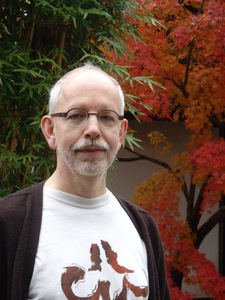ELSI Blog
24 A Potpourri of Artificial Life

Earlier this month, three ELSI members, Jim Cleaves, Yuka Fujii and I, attended the 12th European Conference on Artificial Life in Taormina, an ancient town in Sicily, Italy. It was my first conference on Alife, as the topic is often abbreviated, and I found it very enjoyable, for two reasons.
First of all, I learned a lot about various fields of research that were rather unfamiliar to me. Some sessions focused on robotics, with robots that can walk, roll, crawl, swim, or fly or move in yet different ways. Other sessions addressed lab experiments to try to construct protocells in the lab, very simple versions of living cells that are expected to show more and more life-like characteristics in due time. Yet other sessions had talks on simulations of alternative life forms, often simplified considerably in attempts to study what is essential about living systems. In addition, there was a smattering of talks on artificial intelligence and the behavior of swarms, be they humans, birds, bacteria, or miniature robots. Other buzzwords were biologically inspired engineering, evolvable and adaptive hardware, neural networks and artificial immune systems, and programmable nanomaterials.
Secondly, I was impressed by the degree to which the Alife community was willing to tolerate ambiguity. Most participants seemed to be able and willing to tolerate ideas that were not yet fully worked out, as long as they seemed potentially interesting. This was a refreshing change from most conferences that are more strictly disciplinary. Interdisciplinary research often has a high-risk high gain character; attempts to bridge radically different areas can fail completely, but can also lead to spectacular and totally unexpected successes. Robotics is one area where this is obvious, since it combines so many hardware and software challenges.
A nice example was the talk on "Exploiting Dynamical Complexity in a Physical Tensegrity Robot to Achieve Locomotion" by Mark Khazanov, Ben Humphreys, William Keat and John Rieffel. Starting with an almost random collection of rods and strings, and adding a few motors here and there that could vibrate at tunable frequencies, a system was created that looked like a mess of shivering components, far too complicated to analyze dynamically. But by mapping the behavior as a function of the precise frequencies at which the motors vibrated, they could get the ugly contraptions to move and rotate in precise ways navigating like a robot. A possible application would be to explore buildings after a disaster, such as an earthquake, where the use of wheels or legs might not be practical. This was just one of hundreds of sessions, many of them in parallel, so that it was often difficult to choose.
The overlap between the study of artificial life and the study of origins of life, one of ELSI's key areas of research, is only partial. However, it was large enough to give me a lot of inspiration, while I'm still orienting myself in the field of origins of life. Trying to build any complex system, especially bio-inspired, is likely to have at least some overlap with the question of how life formed, simply because living systems are by far the most complex systems we know.
As always at meetings, much of the `fun and profit' came from informal conversations with colleagues during breaks, and over lunches and dinners. During the day, one great advantage of having four parallel sessions is that you don't feel bad skipping sessions altogether, sitting on a terrace talking with others: instead of missing three talks at any given time, you miss four, which really isn't that much of a difference. (^_^) And during the evenings, the advantage of late Italian dinners meant that the combination of pre-dinner drinks, during-dinner drinks, and after-dinner drinks is guaranteed to lubricate the exchange of ideas as well as the generation of new ones.
During all this, the lively natural setting of the picturesque city, nestled in the hilly landscape, couldn't contrast more with the theme of artificial life, as a study in juxtapositions. And talking about contrasts, next year's meeting will be held in Manhattan, an altogether different cityscape!











